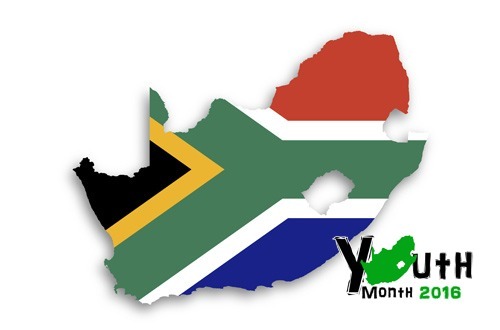 This article forms part of the Youth Month 2016 series in which SME South Africa, throughout the month of June, will shine the spotlight on youth issues and highlight the work of young entrepreneurs and innovators who are shaping SA’s future.
This article forms part of the Youth Month 2016 series in which SME South Africa, throughout the month of June, will shine the spotlight on youth issues and highlight the work of young entrepreneurs and innovators who are shaping SA’s future.
Not since 1976 has the nation’s focus been so firmly planted on South Africa’s youth, and what’s being revealed is a complex picture made up of, on one hand, a generation of young people – defined as ‘millennial’s’ – eager and able to solve the pressing issues they face; and a possessing the energy and characteristics necessary to start businesses.
This is, however, contrasted with a youth faced with high levels of unemployment, increasing and sometimes violent expressions of a deep frustration.
What’s clear is that the youth of 2016 is challenging the status quo, says Lauren Tracey, a researcher at the Institute for Security Studies.
“Youth 2016 not apathetic. They are taking ownership of their issues and saying things need to change, and not very patiently. They want change and they want it now.
“Young people’s struggle is different, it’s ultimately about economic freedom”
“There is an urgency with dealing with challenges,” Tracey says.
South Africa’s has a large youth segment made up of individuals between 14 and 35 years. Young people constitute 41.2% (20.5 million) of the total population.
The boiling point
In 2015 a wave of student lead protests dubbed the #FeesMustFall swept over South African universities with students campaigning against issues ranging from tuition, and financial viability and modelling of institutions.
This was probably the biggest demonstration, apart from service delivery protests which research by the Social Change Research Unit of the University of Johannesburg shows have continued to rise since 2004, of the frustration that young people are facing.
While the focus of the movement has been on higher education institutions, the #FeesMustFall movement is also one of the most revealing glimpses of the challenges affecting young people, namely – issues of economic exclusion, access to quality education and continued inequality, and what they see as government failures, says Tracey.
There is also a feeling of being let-down by the education system, “the feeling that it is not giving them the tools needed to overcome the challenges.”
“These are all issues which are impacting them directly,” says Tracey.
Tracey says her research also revealed some of these feelings. The report entitled ‘Understanding the factors that influence the voting behaviour of young South Africans’ was conducted among young people in late 2013 and early 2014, in the lead up this year’s local government elections.
“For entrepreneurship to be a viable solution, the environment must support young people becoming entrepreneurs”
A question of freedom
Their struggle is different, it’s ultimately about economic freedom, says Tracey, and unemployment is one of the biggest obstacles to them achieving it.
Statistics SA in May this year revealed that South Africa’s unemployment levels to be at the highest rate since the labour force survey began in 2008. Young people are the hardest hit by this as they make up the majority of the country’s unemployed.
And according to the latest social profile of youth, published by Statistics South Africa (Stats SA) the proportion of youths (people between the ages of 15 and 34) not in employment, education or training, has remained at around 30% since 2012.
Is youth entrepreneurship the answer?
Entrepreneurship is considered as a solution to the country’s massive unemployment, however the viability of this is questionable as South Africa’s entrepreneurship levels are alarmingly low, particularly among young people.
Research by the Global Entrepreneurship Monitor (GEM) shows that South Africa’s rate of entrepreneurial activity is very low for a developing nation – a quarter of that seen in other sub-Saharan African countries. This is also true for necessity entrepreneurship, which is defined as the number of people starting businesses due to having no other option for work.
Stats SA also reports that levels of entrepreneurship among young people, especially young women, are dropping. The number of young entrepreneurs has declined from 609 000 in 2009 to 543 000 in 2014.
“I don’t believe that entrepreneurship is the panacea of all ills – but it can be,” says Chimene Chetty, director of the Centre for Entrepreneurship at Wits Business School.
However, for entrepreneurship to be a viable solution, the environment must support young people becoming entrepreneurs, says Chetty. This includes critical components being in place including the appropriate policy, an accessible market, human capital, entrepreneurial culture and funding, she says.
“As a young person you have the energy, enthusiasm, excitement, and the lack of fear of failure is at its optimal. These qualities are not being used as a resource”
In South Africa’s case, the lack of entrepreneurial culture and education are probably the biggest issues holding us back, says Chetty.
“What message are we sending to young people about how to create opportunities for a business?” Employment is still the message that’s being sold, she says. This coupled with the lack of role models means entrepreneurship is not seen as a viable career path by young people.
Chetty says while much of the focus is on university students as agents of change – but that in the case of teaching and encouraging entrepreneurship, university may be too late.
We need to start entrepreneurship education in primary schools as part of the curriculum, she says referencing countries who have implemented this, like Israel and Denmark.
The lessons, she says, need to go beyond “market days” which teach young people business skills, but should be expanded to include creative and innovative design thinking and problem-solving skills.
It’s Chetty’s view that a positive entrepreneurial culture together with training will go some way in building an entrepreneurial pipeline, which she says is lacking in the country. GEM defines this pipeline as a way of understanding the journey that an entrepreneur goes on starting with an individual having a positive view of entrepreneurship, them having the skills and capabilities to start a business, to them eventually having an established business.
See also: Facebook To Host Youth Enterprise Day To Celebrate SA’s Young Digipreneurs
Without this crucial pipeline, despite the existence of policy or funding being made accessible, and even government initiatives, like the effort to create 100 black industrialists and the Gazelles programme which supports high growth business, we aren’t likely to see the number of young entrepreneurs increase, argues Chetty.
An underutilised youth
The consequences of nothing being done are dire. In his article, ‘The time bomb nobody wants to diffuse’, John Kane-Berman a policy fellow at the Institute of Race Relations references The National Development Plan (NDP), adopted by the government in 2012, which said that disenchanted youth were both a lost resource and a “hazard” posing “the single greatest risk to social stability.”
The impact of youth frustration is already clear with the social tension that we are seeing, the anger and acts of violence, says Tracey, but perhaps the most unfortunate consequence is the underutilisation of this demographic and the negative impact it will have on economic growth, adds Tracey.
The solution, suggests Tracey, is for the government, private sector and NGOs to engage better with young people. “Young people want to be spoken to, listened to and acknowledged, invite them into the dialogue, she says.
Chetty agrees with this sentiment, saying: “Young people are powerful sources if we just listen, and they are constantly showing us new ways to engage with them, like social media for example.”
The need to take advantage of young people is also echoed by Chetty, particularly their sense of community and vitality. “As a young person you have the energy, enthusiasm and excitement. And the lack of fear of failure is at its optimal. These qualities are not being used as a resource.”






